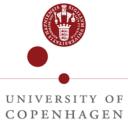MOST POPULAR
A 'module map' showing conditional activity of microarray expression modules in cancer Registration not required.
Click here for more informationsWhile standard alignment methods rely on comparing single residues and imposing gap penalties, DIALIGN constructs pairwise and multiple alignments by comparing entire segments of the sequences. No gap penalty is used. This approach can be used for both global and local alignment, but it is particularly successful in situations where sequences share only local homologies. Registration not required.
Click here for more informationsH-BloX is a web-based JavaScript application that allows one to calculate and visualize the Shannon information or the relative entropy (Kullback-Leibler distance) of sequence alignment blocks. Various residue alphabets may be defined and useful modifications of the alignment block and the alphabet can be applied before calculation. Registration not required.
Click here for more informationsPipMaker computes alignments of similar regions in two DNA sequences. The resulting alignments are summarized with a ``percent identity plot'', or ``pip'' for short. MultiPipMaker allows the user to see relationships among more than two sequences. All pairwise alignments with the first sequence are computed and then returned as interleaved pips. Moreover, MultiPipMaker can be requested to compute a true multiple alignment of the input sequences and return a nucleotide-level view of the results. Registration not required.
Click here for more informationsCompare gene order between two small bacterial genomes Registration not required.
Click here for more informationsCompute post test probability, Multiple comparisons correction Registration not required.
Click here for more informationsDNA or genome alignment and visualization tool based on blastz alignment program. Alignments can be automatically submitted to rVista 2.0 to identify evolutionary conserved transcription factor binding sites. Registration not required.
Click here for more informations
Add to my favorites
Remove from my favorites
unique gene symbols and names
Category: Gene information search
The HUGO Gene Nomenclature Committee (HGNC) has assigned unique gene symbols and names to over 33,000 human loci, of which around 19,000 are protein coding. http://genenames.org is a curated online repository of HGNC-approved gene nomenclature and associated resources including links to genomic, proteomic and phenotypic information, as well as dedicated gene family pages. Registration not required.
Click here for more informationsFOLDALIGN is an algorithm for local or global simultaneous folding and aligning two or more RNA sequences and is based on the Sankoffs algorithm (SIAM J. Appl. Math., 45:810-825, 1985). Foldalign can make pairwise local or global alignments and structure predictions. FoldalignM makes a multiple global alignment and structure prediction. Registration not required.
Click here for more informationsWith more than 900,000 human-edited definitions, Acronym Finder is a largest dictionary of acronyms, abbreviations, and initialisms. Combined with the Acronym Attic, Acronym Finder contains more than 4 million acronyms and abbreviations. Registration not required.
Click here for more informations
Add to my favorites
Remove from my favorites
Category: Gene information search, Gene expression
WashU Human Epigenome Browser allows: Epigenome
The browser currently hosts Human (and other species) Epigenome Atlas data produced by the Roadmap Epigenomics project,but lets users diverge from the strict genome-centric view of the UCSC browser to, for instance, view all genes (or promoters, or 3’ UTRs) in a given pathway side by side. “You can do lots of Google Maps-style operations, and you can look at your data in the context of their metadata.
Click here for more informationsDescription not available. Registration not required.
Click here for more informations
Add to my favorites
Remove from my favorites
Description not available. Registration not required.
Click here for more informationsCalculate volumes and dilutions using both % and molar Registration not required.
Click here for more informationsOverlapping Primers creates multiple overlapping PCR products in one sequence. Registration not required.
Click here for more informationsDescription not available. Registration not required.
Click here for more informationsDistributions: Binomial, Normal, Student's T, Chi Square, Fisher's F Registration not required.
Click here for more informationsDescription not available. Registration not required.
Click here for more informations
Add to my favorites
Remove from my favorites










